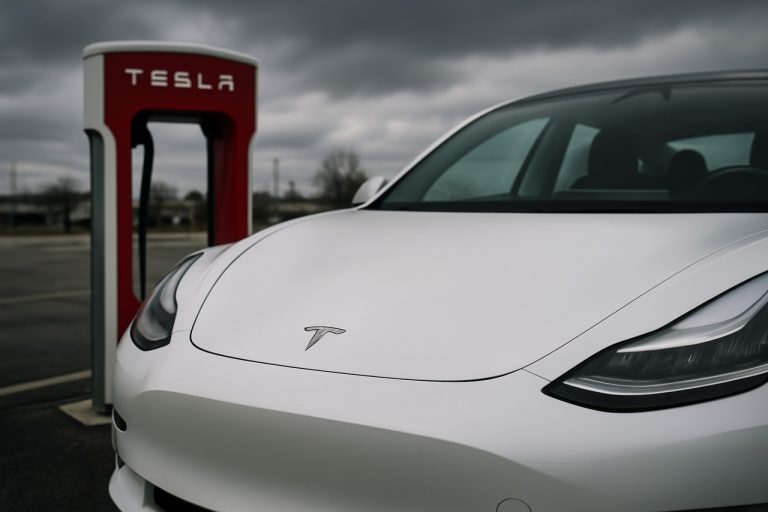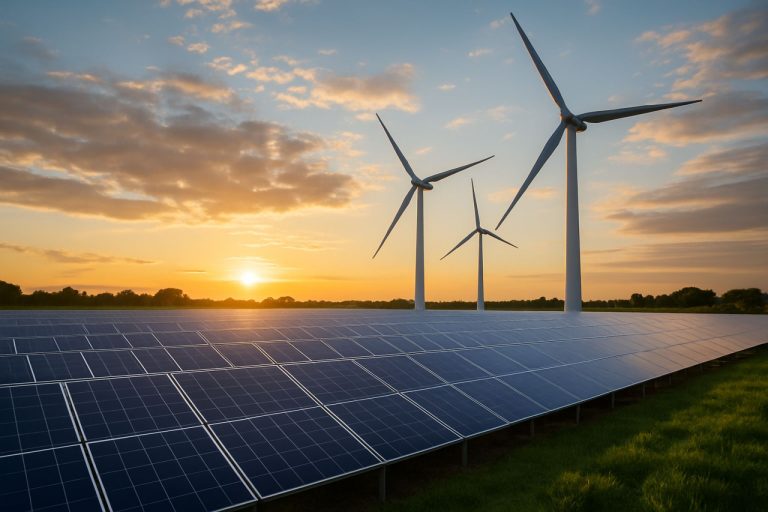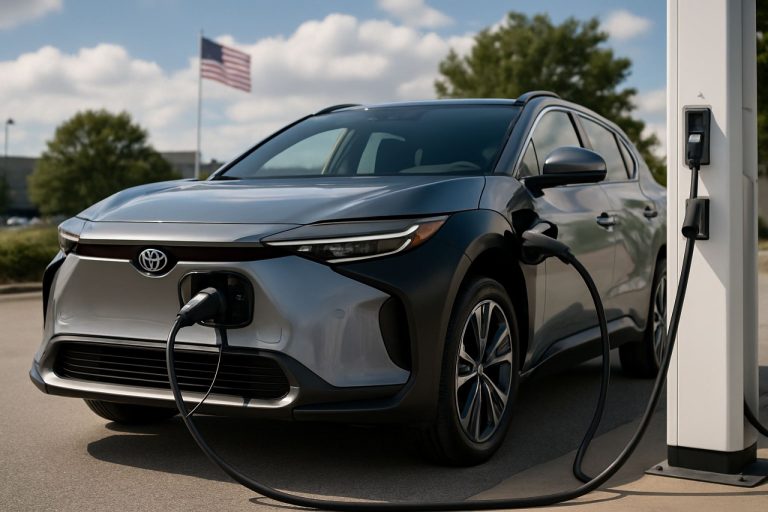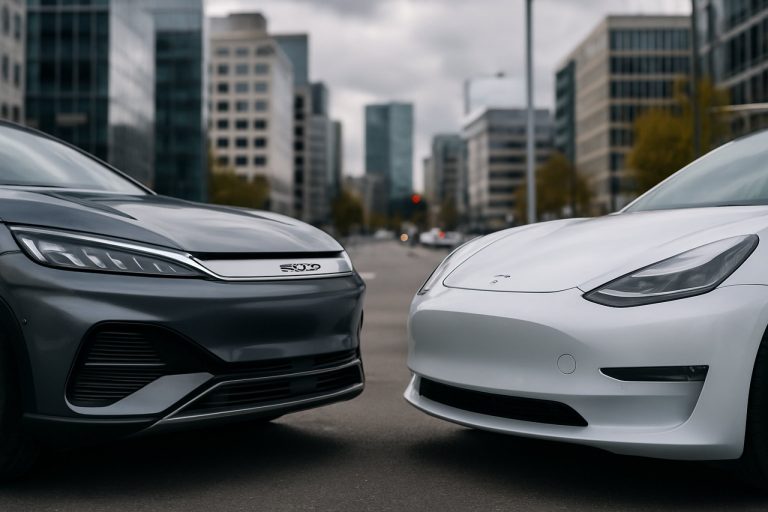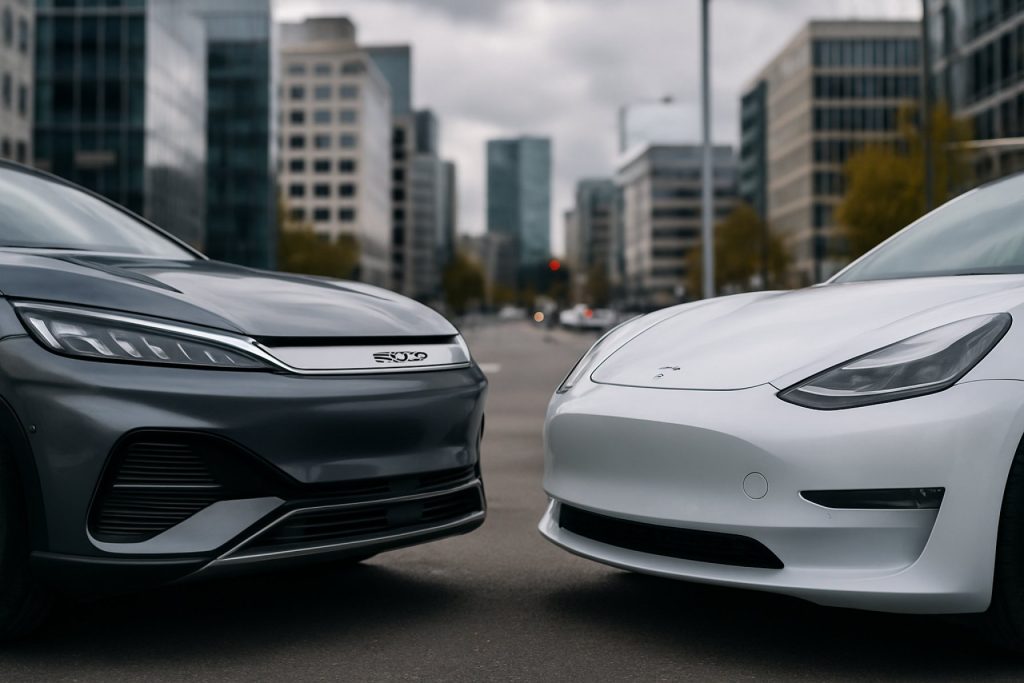
- BYD, a major Chinese electric vehicle company, surpassed Tesla in European sales for the first time, signaling a major shift in the industry.
- Chinese EV brands, led by BYD, are expanding rapidly in Europe, leveraging local assembly, strategic partnerships, and robust supply chains.
- Europe’s appetite for electric vehicles is growing, but Chinese firms are outpacing their American, Japanese, and Korean rivals in sales growth.
- European policymakers are responding with potential tariffs and new regulations due to concerns over China’s export-driven EV surplus.
- BYD’s strategy depends on both winning consumer trust and maintaining favorable regulatory conditions amid rising geopolitical tensions.
- Tesla faces declining European registrations due to consumer concerns and shifting policies, reinforcing BYD’s rise.
Thunderheads gather over Europe’s auto industry. This spring, a new force broke through a ceiling once believed impenetrable. BYD, a Chinese electric vehicle behemoth, edged past Tesla in European sales for the first time. Suddenly, showroom leaders and policymakers across the continent found themselves reckoning with more than just numbers—they faced a vivid glimpse of shifting global power.
Showrooms from Berlin to Budapest now gleam with BYD’s angular silhouettes, symbols of China’s rapid industrial ascent. The breakthrough was not a fluke. Data from Jato Dynamics shows that, in April, BYD registered 7,231 battery electric vehicles (BEVs) in Europe—a year-on-year leap of 169%. That was just enough to eclipse Tesla’s 7,165 units—a razor-thin margin symbolizing far wider tectonic shifts.
Europe’s appetite for electric vehicles is booming: the continent’s BEV registrations surged by 28% in a year. In contrast, Chinese brands outpaced the field, nearly doubling growth rates of their American, Japanese, or Korean counterparts. BYD now embodies this new vigor, propelled by more than aggressive pricing. Their success pulses from a complex engine: strategic alliances in Eastern Europe, local assembly lines to dodge import restrictions, and batteries funnelled through supply chains deeply rooted in China.
But this rapid progress stirs anxiety as much as awe. While innovation turbocharges BYD’s ascent, it’s policy maneuvering that enables such stamina. The company’s investments in Hungary and other Eastern European countries thread a diplomatic needle, exploiting regional openness to foreign capital while sidestepping Western Europe’s cautious stance. East-West tensions inside Europe’s economic bloc widen with each new BYD-branded license plate.
Meanwhile, Tesla grapples with unexpected headwinds. The American brand’s European registrations plunged by 49% in the same period, battered by both shifting consumer moods and the storm clouds of American policy uncertainty. European drivers, increasingly leery of Tesla’s polarizing leadership and shaken by the rollback of American EV incentives, veer toward alternatives that feel less politically fraught.
Beyond the sales floor, officials in Brussels draw their own battle lines. The European Commission, alarmed by a flood of cut-price Chinese cars, has moved to impose punitive tariffs, with incoming levies possibly reaching 35%. The rationale is simple: China’s electric vehicle industry produces far more than it can absorb domestically. Its surplus, equivalent to twice the size of Europe’s own market, must find a home elsewhere.
Diplomatic overtures muddle the scene further. Negotiators from the European Union and China scramble to hash out minimum sales prices for Chinese EVs, but consensus remains elusive. The result is a high-wire act, with politicians wary of both economic dependencies and the loss of homegrown innovation.
Yet warnings issued from academia and think tanks temper the hype. Some analysts note that BYD’s headline numbers reflect a strong presence in the fleet and rental market, not necessarily surging consumer demand. The company’s ambitious plans to double its overseas sales by 2025 hinge as much on securing local assembly plants—in Brazil, Hungary, Turkey, and Thailand—as on winning European hearts.
Looming above all are the shifting winds of geopolitics. As the United States pivots back toward traditional automaking and Europe clings to its green ambitions, Chinese automakers like BYD must navigate a world where subsidies and favorable terms could vanish overnight.
The crucial question: can BYD transform its brief triumph into a durable foothold, balancing global ambitions with mounting scrutiny and shifting regulations?
For now, BYD’s April victory signals more than a single-month leaderboard shift. It is a bellwether of how supply chains, climate policy, and great-power competition now intertwine in Europe’s crowded car lots. Policymakers, business leaders, and drivers alike are being forced to grapple with not only what’s on the road—but who leads the way.
Key takeaway: The electric vehicle revolution is about more than technology; it’s a high-stakes contest of strategy, ideology, and global influence. BYD and its rivals are accelerating into an uncertain future, where today’s winner could tomorrow face daunting barriers—or open new lanes for the world to follow.
For readers seeking a broader lens on world-changing innovation and its impact on daily life, explore trusted sources like Reuters and Bloomberg for reliable updates on global industry trends.
Europe’s EV Race: Why BYD’s Shock Victory Over Tesla Means More Than Just Big Sales Numbers
BYD Topples Tesla: Unpacking an Electric Earthquake in Europe’s Auto Market
The recent news that BYD, a Chinese electric vehicle (EV) powerhouse, edged past Tesla in European sales marks more than just a leaderboard shift—it signals fundamental changes shaking the global car industry. While the original article highlighted BYD’s April triumph and the anxieties surrounding Chinese expansion, there’s a lot more to this dramatic story. Here’s a deeper dive with extra facts, expert insight, pressing Q&As, and actionable recommendations—plus smart life hacks for curious drivers.
—
Quick Facts You Might Have Missed
1. BYD’s Vertical Integration Is a Game Changer
Unlike most automakers, BYD manufactures its own batteries—principally the ultra-safe and durable Blade Battery. This control slashes costs, increases reliability, and fortifies strategic independence. According to BloombergNEF, battery production comprises ~40% of an EV’s cost, giving BYD a rare pricing advantage.
2. European Consumer Preferences Are Shifting
Recent studies (e.g., European Automobile Manufacturers’ Association ACEA data) show that European drivers increasingly demand affordable, well-equipped EVs with long-range capabilities. BYD’s models like the ATTO 3 and Dolphin meet these needs, often undercutting Western rivals on price.
3. BYD’s Assembly Plant Strategy Is Just Starting
In December 2023, BYD broke ground on a massive EV assembly plant in Szeged, Hungary—its first passenger car facility in Europe. Local production won’t just dodge tariffs; it will also tap into EU green incentives and job creation, constructing a crucial European foothold ([source: Financial Times](https://www.ft.com)).
4. BYD’s European Lineup Is Growing Fast
BYD’s initial foray, the Tang SUV and Han sedan, has quickly broadened to the Dolphin, Seal, and Atto 3—models that target mainstream and premium buyers alike. Their expansion plan includes direct-to-consumer sales and partnerships with major dealership groups (e.g., Hedin Mobility).
5. Broader Market Trends: EU vs. China Showdown
The EU’s proposed anti-subsidy probe could lead to tariffs not just on BYD, but on all Chinese-made EVs—potentially altering pricing and supply chain strategies overnight. The European Commission’s review has already prompted rivals to reconsider global manufacturing plans ([source: Reuters](https://www.reuters.com)).
—
Most Pressing Questions Answered
Q: Are Chinese EVs more affordable than European or American models?
A: Yes. BYD’s Atto 3 starts at approximately €38,000 in Europe with standard features that cost extra on rivals, according to Jato Dynamics. For comparison, the Tesla Model Y typically starts at over €44,000.
Q: How do Chinese EVs compare in quality and safety?
A: BYD’s Blade Battery passed Europe’s rigorous safety tests (Euro NCAP), even beating some European models. Reviews from outlets like Autocar and Carwow rate the Dolphin and Atto 3 highly for build quality, technology, and reliability.
Q: Can European manufacturers compete?
A: Legacy brands (Volkswagen, Stellantis, Renault) are ramping up low-cost EV lines (e.g., Renault 5 EV) but face challenges scaling battery supply, controlling costs, and matching the value proposition of Chinese rivals.
Q: Is there a geopolitical risk to relying on Chinese brands?
A: Absolutely. China dominates mineral supply chains (especially lithium, cobalt), batteries, and now final vehicle assembly. EU policymakers warn this could create strategic dependencies incompatible with “open strategic autonomy” aims ([European Parliament Research](https://www.europarl.europa.eu/)).
Q: What about sustainability and security concerns?
A: ESG watchdogs note that China’s rare earth mining often comes with environmental impacts. In contrast, BYD’s battery recycling initiatives are advanced but European transparency standards are higher.
—
Pros & Cons Overview
Pros:
– Affordability: Lower prices for well-equipped EVs
– Range: Competitive or superior battery range and charging tech
– Innovation: Vertical integration and fast development cycles
– Local Assembly: Job creation and supply chain localization
Cons:
– Trade Tensions: Tariff risks and shifting EU trade policy
– Brand Trust: Some European consumers still favor legacy brands
– Geopolitical Risk: Strategic dependence on China
– Resale Value: Unknown long-term reliability in Europe
—
Real-World Use Cases
– Fleet Operators: Car rental giants (e.g., Sixt) are trialing BYD’s vehicles to cut costs and reduce emissions.
– Urban Commuters: Mid-priced BYD models offer affordable city transport with low running costs, challenging offerings from Volkswagen and Peugeot.
– Ride-Sharing: Uber and Didi in Europe are exploring Chinese EVs for lower total cost of ownership.
—
Industry Trends, Insights & Predictions
– Tariff Shock: If the EU raises tariffs, expect Chinese firms to rush local plants—mirroring Toyota’s 1980s ‘transplant’ strategy in the USA.
– Battery Innovation Leaders: BYD and CATL edge Europe in battery innovation (solid-state, sodium-ion R&D).
– Branding Evolution: BYD is investing heavily in European marketing, positioning itself as a “green tech innovator” not just a cheap import.
– Market Share Race: Bloomberg projects Chinese OEMs could seize 15-20% of the European EV market by 2027 if current trends continue and local production expands.
—
How-To Steps & Life Hacks: Choosing Your Next EV
1. Compare Beyond Price: Analyze battery range, safety ratings, dealer service reach, and resale forecasts.
2. Test Drive Multiple Brands: Experience both established (VW, Renault, Tesla) and new Chinese (BYD, MG) models for tech and comfort differences.
3. Track Incentives: Check for up-to-date government EV subsidies or trade-in offers, especially post-tariff changes.
4. Follow Industry News: Stay updated via reputable sources—see Reuters or Bloomberg for tariffs and industry turmoil.
5. Plan for Charging: Research charging network compatibility (BYD supports CCS2 and increasingly, NACS in export models) and home charging options.
—
Controversies & Limitations
– Fleet vs. Private Demand: BYD’s sales skew toward fleet/rental, not always reflecting retail demand.
– EU Policy Volatility: European policy shifts could dramatically alter pricing, supply, or even the availability of some Chinese models.
– Transparency & ESG: Traceability of supply chains lags European best practice.
—
Features, Specs & Pricing Snapshot
| Model | Range (WLTP) | Price (€) | Charging (kW) | Safety Rating |
|————-|————-|———–|—————|————–|
| BYD Atto 3 | 420 km | ~38,000 | 88 DC | 5-Star NCAP |
| BYD Dolphin | 427 km | ~29,990 | 88 DC | 5-Star NCAP |
| Tesla Model Y| 455 km | ~44,000 | 170 DC | 5-Star NCAP |
*Specs will vary by country/trim.
—
Reviews & Comparisons
– Auto Express: “BYD Dolphin surprised, offering refinement and value rare at this price point.”
– Autocar: “Interior quality and real-world efficiency put BYD on par with leading Western rivals.”
—
Actionable Recommendations
1. If Considering a New EV: Book a test drive in both Chinese and legacy brands. Compare charging support in your area.
2. Following Industry News: Bookmark BYD’s official newsroom at BYD.
3. For Fleets/Businesses: Evaluate total cost of ownership and potential supply chain disruptions before bulk orders.
4. If Concerned About Resale: Lease rather than buy in early years of new brand entry.
5. Stay Informed: Watch ongoing EU-China negotiations to anticipate future pricing and model availability.
—
Key Takeaway
BYD’s leap over Tesla isn’t just a headline—it anchors a global shakeup driven by technology, policy, industrial strategy, and geopolitics. Whether this momentum lasts will depend on evolving tariffs, consumer skepticism, battery innovation, and how fast European rivals can respond. For drivers, staying informed is the best gear for navigating the electric revolution.
Explore more straight from the source at BYD, or for a reliable overview of auto industry trends, keep tabs on Reuters and Bloomberg.
